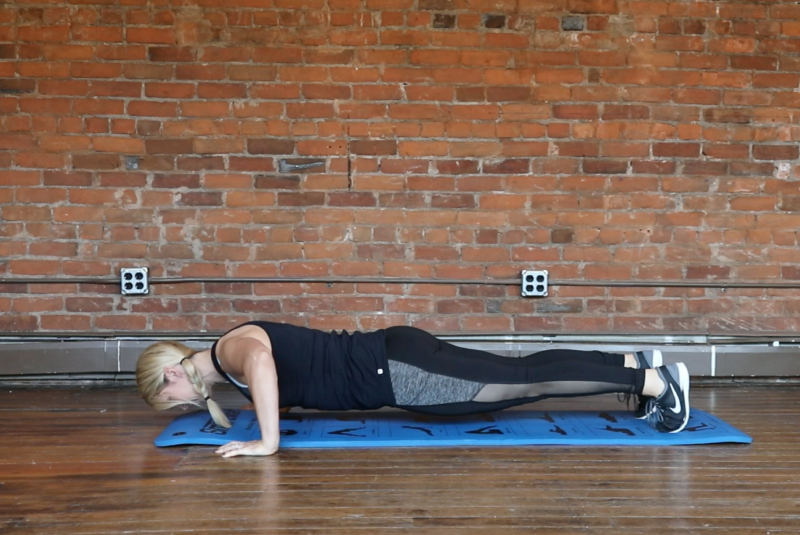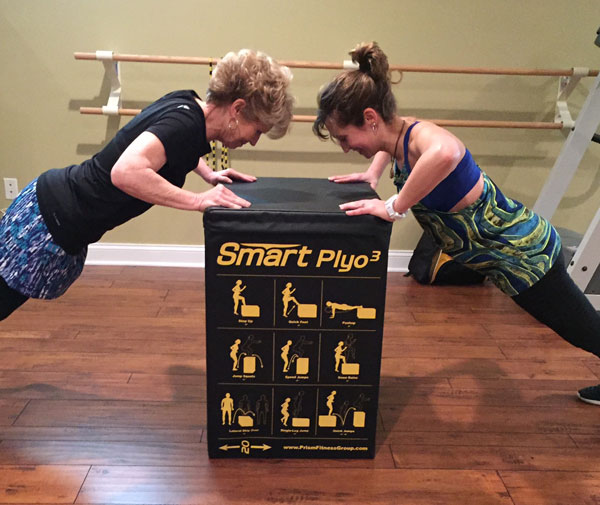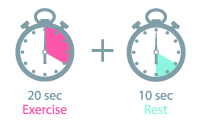Circuit Training vs HIIT (High-Intensity Interval Training) are two powerhouse workout styles that have captured the fitness world’s attention. While both aim to torch calories and shed fat, understanding the nuances between these popular training methods is paramount for achieving your fitness goals efficiently.
Circuit Training revolves around moving through a series of exercises in quick succession, targeting different muscle groups. On the other hand, HIIT (High Intensity Interval Training) involves short bursts of intense activity. Followed by brief rest periods, pushing your heart rate into overdrive. Each style offers unique benefits for fat loss and cardiovascular health. By delving into the specifics of Circuit Training and HIIT, we can uncover which one reigns supreme when it comes to maximizing calorie burn and boosting metabolic rates.
Embarking on a fitness journey requires informed decision-making tailored to your goals. Whether you’re a seasoned gym-goer or exploring new workout avenues, understanding the main difference between Circuit Training vs HIIT can help you shape an effective exercise regimen that aligns with your aspirations. Let’s dive deeper into these two training styles. Learn key health benefits and determine which training style is better for your fitness goals.
Circuit Training: A Dynamic Fat-Burning Workout
Circuit training generally refers to a workout in which you move from one exercise station to the next. It can either be based on a set number of reps or a timed session. A conventional circuit training workout includes 8-10 exercise stations. After completing the reps or prescribed time for a station, instead of resting, you move quickly to the next exercise in the circuit. This workout style combines strength training and cardiovascular exercises. This creates a dynamic routine that keeps the heart rate elevated throughout the session. The high-intensity nature of circuit training challenges the body, leading to improved endurance, strength, and calorie burn. It is a versatile workout that can be customized based on individual fitness levels and goals.
Key Benefits of Circuit Workouts
One of the key benefits of circuit workouts for fat loss is its ability to maximize calorie expenditure within a short period of time. By engaging in a series of exercises targeting various muscle groups consecutively, circuit training ramps up the metabolism. This results in continued energy expenditure even after the workout is completed. Furthermore, incorporating a full-body workout with both strength and cardio elements into one efficient session can help individuals achieve their weight loss goals effectively. For those looking to shed excess fat while improving overall fitness levels, circuit training provides a comprehensive solution.
For beginners looking to kickstart their fitness journey through circuit training, starting with simple yet effective routines can set a strong foundation. An example beginner circuit may include body weight exercises. Such as squats, push-ups, lunges, and planks interspersed with short bursts of cardio like jumping jacks or mountain climbers. As beginners build confidence and stamina, they can gradually increase their intensity. You can increase intensity by incorporating weights or adding more challenging movements to the circuits. The beauty of circuit training lies in its adaptability, especially for older adults, making it accessible for individuals at various fitness stages seeking an efficient way to burn fat and boost their overall health.

HIIT: Less Time, Big Results
High-Intensity Interval Training, commonly known as HIIT, involves short bursts of intense exercise followed by brief periods of rest. This style of workout pushes your body to its limits in a shorter amount of time compared to steady state cardio. A typical HIIT session could include exercises like sprints, burpees, or jump squats performed at maximum effort for 20-30 seconds. Followed by 10-15 seconds of rest before repeating the cycle.
Key Benefits of HIIT
One of the key benefits of HIIT is its efficiency in burning fat. Research suggests that HIIT can increase your metabolic rate not only during the workout but also post-exercise (Learn more about the EPOC Effect), leading to greater calorie burn throughout the day. Additionally, HIIT has been shown to improve cardiovascular health by enhancing heart function and increasing oxygen consumption during and after workouts. This makes it an excellent choice for individuals looking to improve both their fitness levels and shed excess body fat.
Sample HIIT training routines can be adapted to suit different fitness levels. For beginners, a simple routine might involve performing bodyweight exercises like jumping jacks, mountain climbers, and planks in short intervals with rest periods in between. Intermediate individuals could incorporate equipment like kettlebells or resistance bands into their HIIT sessions for added intensity. Advanced HIIT enthusiasts might challenge themselves with complex movements or heavier weights during their high-intensity intervals to further elevate their fat-burning potential.
Comparison: Fat Burning Potential
When comparing fat burning potential between Circuit Training vs HIIT, it’s essential to understand the science behind each type of workout. Circuit Training typically involves a series of exercises performed back-to-back with minimal rest in between. While it can help burn calories during the workout, studies suggest that HIIT, characterized by short bursts of high-intensity exercises followed by brief rest period, may have a more significant impact on post-exercise calorie burn known as excess post-exercise oxygen consumption or EPOC. This means that even after finishing a HIIT session, your body continues to burn calories at an elevated rate due to increased metabolic demands.
Research findings have shown that while both Circuit Training and HIIT can effectively contribute to fat loss, HIIT might offer a slight edge in terms of maximizing calorie burn in a shorter amount of time. A study published in the Journal of Sports Science & Medicine compared the energy expenditure of different workouts and found that participants burned more calories per minute during a HIIT session than during traditional Circuit Training. However, individual results may vary based on factors like fitness level, exercise intensity, and overall effort put into the session.
Significant differences between Circuit Training vs HIIT
Factors influencing fat loss efficacy include workout intensity, duration, frequency, and individual metabolism. Circuit Training often allows for longer sessions focusing on muscle endurance and strength with moderate calorie burn throughout. On the other hand, HIIT’s intense intervals can lead to a higher metabolic rate post-workout but may be more challenging for beginners due to its demand for cardiovascular fitness and endurance. Ultimately, both training methods have the potential to aid in fat burning; choosing the right one depends on personal preferences and fitness goals.
Effectiveness in Time Management
When it comes to the comparison between Circuit Training and HIIT in terms of time management, understanding the differences in workout duration and frequency is key. Circuit Training typically involves a series of exercises completed one after the other with minimal rest in between. These sessions can last anywhere from 30 minutes to an hour, making them suitable for individuals looking for efficient fat-burning workouts within a moderate time frame. On the other hand, High-Intensity Interval Training (HIIT) consists of short bursts of intense exercise followed by brief rest periods, often lasting around 20-30 minutes per session. The shorter duration of HIIT makes it appealing to those with tight schedules seeking quick yet effective fat-burning routines.
To maximize time efficiency while ensuring optimal fat-burning results, incorporating Circuit Training or HIIT into your routine requires strategic planning. For Circuit Training enthusiasts, planning out a circuit that targets different muscle groups effectively can help streamline the workout process and make the most out of each session. Incorporating compound movements like squats, lunges, push-ups, and planks can elevate heart rate and engage multiple muscles simultaneously, enhancing calorie burn within a limited time frame. Similarly, for those gravitating towards HIIT workouts, structuring intervals that alternate between high-intensity exercises and recovery periods can amplify fat loss benefits while keeping workout times concise.
For individuals juggling busy schedules but eager to prioritize fitness goals, integrating either Circuit Training or HIIT into daily routines can be manageable with proper time allocation strategies. One approach is to schedule shorter but intense training sessions during pockets of free time. If committing to longer workouts seems challenging, this might make it easier. Additionally, planning ahead and setting realistic workout goals aligned with personal schedules can help maintain consistency in training.
Muscle Building and Toning Circuit Training vs HIIT
When it comes to muscle building and toning, both Circuit Training and HIIT have their unique contributions. Circuit Training is excellent for enhancing muscle endurance and overall tone. The repetitive nature of moving from one exercise to another keeps the muscles engaged throughout the session, promoting lean muscle development. For individuals aiming to sculpt their physique and improve muscular strength gradually, Circuit Training can be a beneficial addition to their workout routine.
On the other hand, HIIT workouts are known for their ability to boost metabolic rate post-exercise and stimulate muscle growth through intense bursts of activity. The high-intensity exercise intervals incorporated in HIIT routines challenge different muscle groups, leading to increased calorie burn not only during the workout but also during the recovery phase. This makes HIIT an effective choice for those looking to build muscle definition while keeping body fat levels in check.
Maximize the Benefits of Both Training Methods
A combination of Circuit Training and HIIT can be implemented to maximize the benefits of both training methods. By alternating between the two styles or incorporating elements of each into a single workout session, individuals can strike a balance between endurance development from Circuit Training and muscle hypertrophy from HIIT. For example, start a routine with a Circuit Training circuit focused on compound movements like squats and push-ups. Next, incorporate a series of HIIT sprints to create a comprehensive approach to muscle building and toning.
Ultimately, the effectiveness of either style for muscle building and toning depends on individual preferences, fitness goals, and physical capabilities. Experimenting with different combinations of Circuit Training and HIIT can help individuals tailor their workouts to suit their specific needs while ensuring well-rounded progress towards achieving desired results in terms of muscle strength, tone, and overall fitness level.
Adaptability to Different Fitness Levels Circuit Training vs HIIT
Understanding the benefits and constraints of Circuit Training and HIIT is vital for adapting workouts to various fitness levels. Circuit Training offers a structured approach and allows beginners to adjust exercises according to their abilities. They can begin with lighter weights or resistance bands and gradually incorporate more challenging moves. HIIT workouts, however, may be daunting for beginners due to their intensity. Yet, they can ease into it by taking longer rest breaks between intervals or opting for lower intensity movements.

Intermediate fitness enthusiasts often benefit from the versatility of both Circuit Training and HIIT. In Circuit Training, intermediate individuals can gradually increase the intensity by adding more challenging exercises or reducing rest time between circuits. Similarly, those at an intermediate level in HIIT can experiment with different work-to-rest ratios or incorporate advanced movements like burpees or mountain climbers to push their limits further. As for advanced individuals, both styles offer opportunities for continuous progression. Advanced Circuit Training participants may introduce heavier weights or complex multi-joint movements into their circuits, while experienced HIIT practitioners can intensify intervals with maximum effort sprints or increase overall workout duration.
For personalized recommendations tailored to varying fitness levels:
– Beginners should focus on mastering proper form and gradually increasing intensity.
– Intermediate individuals can experiment with progressions in difficulty and intensity.
– Advanced fitness enthusiasts are encouraged to challenge themselves by incorporating higher resistance or pushing limits in terms of speed and endurance.
By understanding the adaptability of Circuit Training and HIIT routines across different fitness levels, individuals can tailor their workouts to match their current abilities. While simultaneously advancing towards their fitness goals effectively. Experimenting with modifications based on individual strengths and weaknesses ensures a balanced approach that promotes growth and prevents plateaus in one’s workout journey.
Choosing the Right Workout Style Circuit Training vs HIIT
In conclusion, Circuit Training and HIIT offer unique benefits. Circuit Training focuses on continuous movement and muscle engagement, making it effective for those seeking a well-rounded workout. On the other hand, HIIT offers quick bursts of intense activity that can elevate calorie burn even after the workout is done.
When deciding between Circuit Training and HIIT, factors such as personal fitness goals, current level of physical conditioning, and time availability should be considered. It’s essential to experiment with both styles to discover which one aligns best with individual preferences and yields optimal results. Remember, the key to long-term success lies in choosing a workout style that not only burns fat effectively but also fits seamlessly into your lifestyle and keeps you motivated on your fitness journey.
HIIT Workout
To design a HIIT workout, simply choose a set of exercises that you will do at high intensity and a matching number of lower intensity exercises. Next, determine your time interval. Here’s an example.
EXERCISE 1: Burpees (30 seconds)
Recovery exercise: Jogging (10 seconds)
EXERCISE 2: Pushups (30 seconds)
Recovery exercise: Arm rotations (10 seconds)
EXERCISE 3: Jump Rope (30 seconds)
Recovery exercise: Boxer Warm-ups (10 seconds)
EXERCISE 4: Tuck Jumps (30 seconds)
Recovery exercise: Low kicks (10 seconds)
Put that exercise on repeat, and you have a 30 min HIIT Training session. You can also vary the exercises in subsequent sets to create a more varied routine.
A Tabata is a very specific type of HIIT training that consists of a four-minute workout that includes eight rounds of 20 seconds of work at maximum effort. The exercise method is named after Izumi Tabata, who discovered the benefits to this way of training back in 1996.

Circuit Training Workout
To design a circuit workout, define a series of 8-10 exercises and set up the stations, including any equipment you will need. Determine whether you wish to complete a prescribed number of reps (speed focus), or a prescribed time (endurance focus).
1. SMART Med Ball Sumo Squat: 20 reps
2. SMART Plyo Rebounding Box Jumps: 10 reps
3. Pushups off SMART Plyo Box: 20 reps
4. SMART MODULAR Agility Ladder Runs: 4 run-throughs
5. SMART Stability Ball Plank Jack Knife: 20 reps
6. Conditioning Ropes: 15 reps
7. Resistance Band Bicep Curls: 20 reps
8. Medicine Ball Globe Crunches: 20 reps
Repeat the circuit to meet your desired workout goal. If you are going for completed reps, try to see if you can beat your time in each round of your circuit. If you are going for set times, build a 30 or 60 minute session depending on your fitness goals and scheduling.
Looking for more workout ideas? Try 3 Workout Routine You Can Take Outside or view our Four Station Bootcamp Circuit here:








